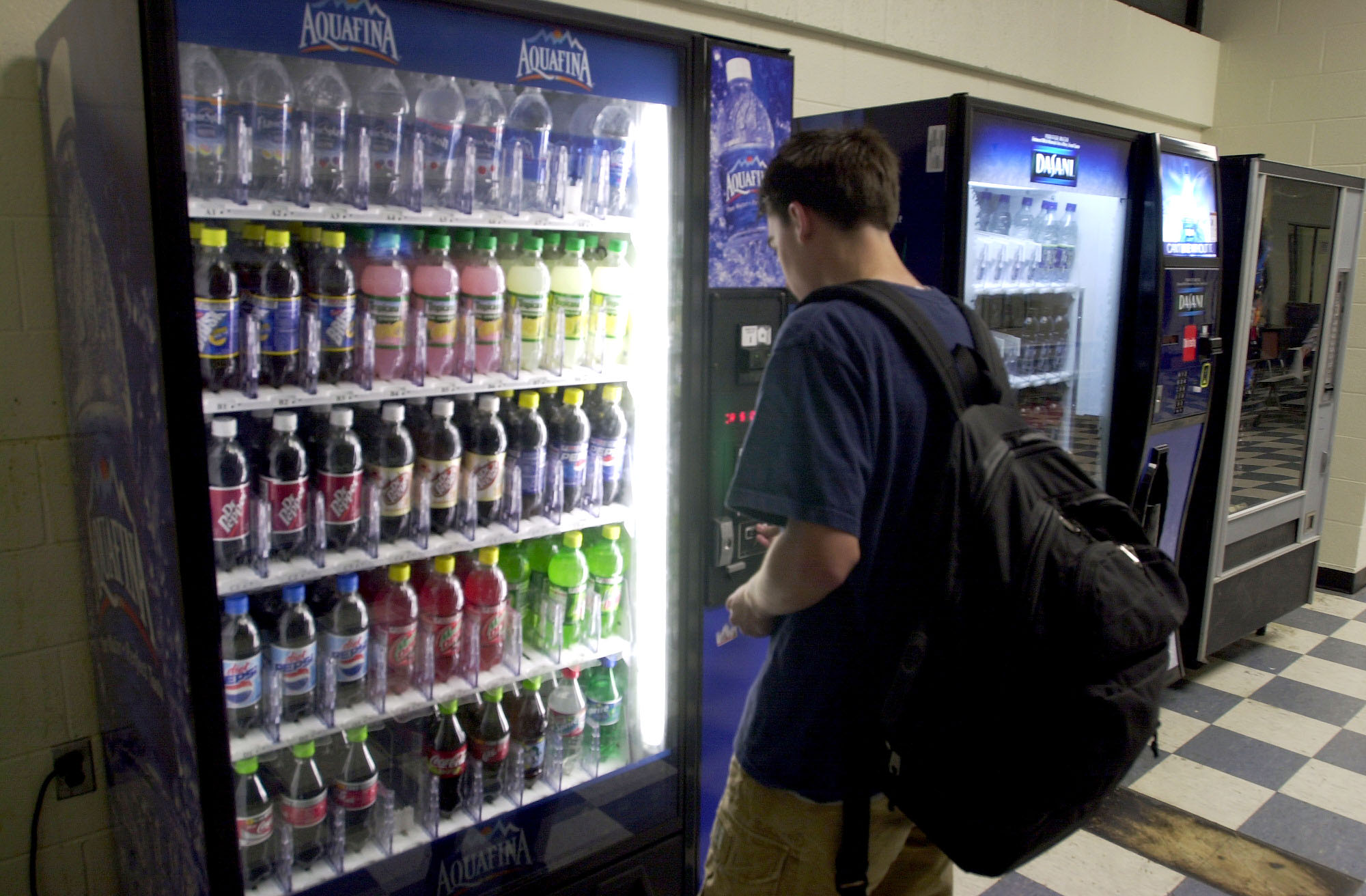The tin of 7UP rolls to a stop at my feet. I pick it up, scowling at the kid on a bike who'd tossed it and missed the litter bin. The can is green and shiny: "Put some play into your every day," it says. "Escape to a carefree world ... Don't grow up. 7UP." And underneath, in tiny print, the real info (though you need a calculator to get to the truth): the lemon- and lime-flavored drink contains a trace of salt, no fat, no fiber and 34.98 grams of sugar — eight teaspoons — and 135 calories. That's enough energy for an hour's cross-country running. It's cheap, too. Half the price of milk.
If the stats are right, this Scottish teenager who threw the empty tin, drinks 287 cans, or the equivalent, a year: more sugary drinks than any other child in Europe. Not to mention a whole lot more sugar, in breakfast cereals, bread, and even chicken nuggets. That is in part why Scottish children's teeth are the same quality as those of children in Kazakhstan. And perhaps why a 2010 survey of 17 countries found that only Mexicans and Americans were fatter than Scots.
Of course sugary drinks make work for more people than dentists. Though the drinks and food industry still hotly contests it, a scientific consensus is now emerging that fatal problems can be traced back to excessive sugar consumption. Sugary drinks, addiction and obesity are inextricably linked: excess sugar in the diet may be a greater cause of obesity than fat is.


















With your current subscription plan you can comment on stories. However, before writing your first comment, please create a display name in the Profile section of your subscriber account page.